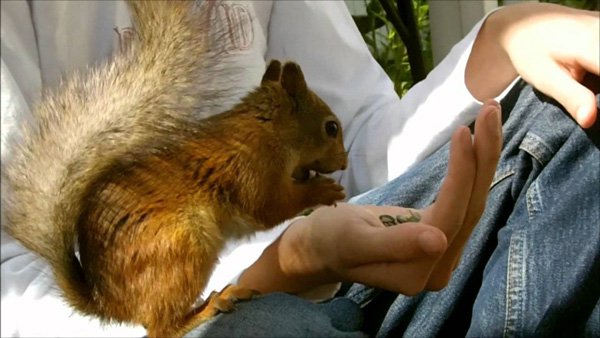
A vacation to a spot like the Dominican Republic is a chance to live out a tropical island paradise fantasy - and who doesn't dream of that? But there's more to do than just lie on a beach. The Caribbean ocean is one of the most diverse places on the planet, home to a sizable percentage of the world's coral reef systems. The creatures that live around and in the reefs are diverse, beautiful, and strange. Here are three Caribbean reef animals that are worth a scuba trip for; just make sure to take an underwater camera!
Occasionally the Caribbean Reef Squid is found off the coast of Florida, but it is mainly found elsewhere throughout the sea. They swim together in small schools of roughly 25 individuals, darting in and out of the shallows near coral reef systems. The squid consume roughly 30-60% of their body weight each day, catching fish, molluscs, and crustaceans with their club-shaped long tentacles. Young squid usually live in turtle grasses near islands, remaining below the surface of the water in order to avoid being spotted by birds. Adults, on the other hand, will swim out into the open waters, diving as deep as 100 meters below the surface.
The Caribbean Reef Squid is amazing in its ability to fly out of the water. This discovery resulted in the identification of six distinct species of flying squid. Most of the time, they remain below the surface, but that doesn't mean they stop being fascinating. Caribbean Reef Squids show fairly complex communication behaviors. They use color, texture, and shape changes to relay messages to their schoolmates, not only to warn them of danger but also to court potential mates. A Caribbean Reef Squid can send independent messages at the same time to other squids to their right and left. Mating pairs blow water at one another and 'dance' for up to an hour of courtship.
But the true intelligence among Caribbean invertebrates is definitely in the Reef Octopus, a large and chunky cephalopod that makes its home in the warm waters around the coral reefs, settling in tough-to-find rocky lairs. The Reef Octopus will change in order to blend in with other objects in it's natural environment, but it's normal color is difficult to detail. Observers have found color ranges from crimson all the way to bright green. Like most octopuses, they show a remarkable level of intelligence; they are know to have good memories, and to avoid known dens or locations of predators. Some of the camouflage that Reef Octopuses have used to evade predators, include coconuts and (amazingly) algae.
The Caribbean Reef Shark is a 10-foot-long predator that inhabits the Caribbean ocean almost exclusively. They feed on fishes and some cephalopods, and are usually featured in tourist "shark meet" attractions. These creatures are classically sleek and streamlined, with a rounded, broad snout and large eyes. By detecting low-frequency noise in the ocean, they can find bony fishes, stingrays and cephalopods on which to feed. The Reef Shark is viviparous: for example, eggs in a female shark's embryo will develop a placental connection to their mother after the yolk supply is exhausted. Young are born live and fully developed.
An amazing ecosystem lies off areas such as Jamaica and the Dominican Republic, and is home to these curious and unusual ocean creatures. Always be sure to go animal-watching with a knowledgeable guide who will not disturb this fragile and beautiful environment. It's a chance to see some beautiful, strange animal and plant life in the wild--a once in a lifetime chance to experience the world in a whole new way.
 Progressive Retinal Atrophy (pra) In Dogs
Progressive Retin
Progressive Retinal Atrophy (pra) In Dogs
Progressive Retin
 Health & Personality - What To Look For In A Kitten
Health & Personal
Health & Personality - What To Look For In A Kitten
Health & Personal
 Dealing With A Snappy Puppy
Dealing With A Sn
Dealing With A Snappy Puppy
Dealing With A Sn
 Important Things to Consider While Opening Dog and Cat Boarding
Important Things to Consider While Opening Dog and Cat Boa
Important Things to Consider While Opening Dog and Cat Boarding
Important Things to Consider While Opening Dog and Cat Boa
 How To Feed A Hyperactive Dog
How To Feed A Hyp
How To Feed A Hyperactive Dog
How To Feed A Hyp
Copyright © 2005-2016 Pet Information All Rights Reserved
Contact us: www162date@outlook.com